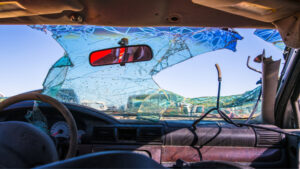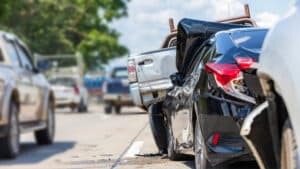Written By: Chris Dolan and Alison Baird
Should I or my elderly sister fall on the sidewalk due to uneven pavement due to overgrown tree roots, what would constitute a dangerous condition? Who would be liable?
– Amber from San Francisco, California
Uneven sidewalks can cause pedestrians to trip and fall, leading to severe injuries. Uneven sidewalks can be caused by tree roots lifting the concrete, creating trip hazards, deterioration of the concrete, creating breaks, heat and water-related damage or damage from construction. One of the issues after a trip and fall accident is whether the condition of the sidewalk that caused you to trip constituted a dangerous condition.
What does “Dangerous Condition” mean?
Not every crack in a sidewalk constitutes a dangerous condition. The general rule is that defects in the sidewalk that are less than an inch are considered a “trivial defect”. The trivial defect doctrine is a defense strategy that means there is no liability for person who is injured from a defect that is deemed trivial. Government Code section 830(a) defines dangerous condition: “Dangerous condition” means a condition of property that creates a substantial (as distinguished from a minor, trivial, or insignificant) risk of injury when such property or adjacent property is used with due care in a manner in which it is reasonably foreseeable that it will be used.
Courts have ruled that a defect in an uneven sidewalk of less than an inch is considered a trivial defect. However, you must consider all circumstances surrounding the accident. Other factors such as shading or lighting in the area, whether there were broken pieces, jagged edges, or debris, grease, or water hiding the defect, combined with a defect that is less than an inch can create a dangerous condition that is actionable.
What is considered “open and obvious”?
Another defense is the defect that is considered “open and obvious” if the danger is so apparent that a person could reasonably be expected to see the danger and avoid it. Again, you must look at the totality of the circumstances surrounding the fall.
In addition to establishing a dangerous condition, the law requires the owner of the sidewalk must have prior notice of the condition. Supposed the sidewalk is owned and maintained by a Governmental or public entity. In that case, a public entity has actual knowledge that the condition exists and knew or should have known of its dangerous character. Government Code section 835 provides a public entity has constructive notice of a dangerous condition if it is established that the condition existed for such a period of time and was of such an obvious nature that the public entity, in the exercise of due care should have discovered the condition and its dangerous character. Constructive notice can be shown if in the exercise of due care on reasonable inspection the condition should or would have been discovered.
Should the sidewalk is maintained and owned by a public entity (city, county, municipality), there may also be liability on the property owner abutting the sidewalk. Property owners are liable for the condition of public sidewalks that they have altered or constructed and are also responsible for creating unsafe condition on the public sidewalks.
There are strict time limitations in which you must act if the sidewalk is owned by the city, county or other governmental/public entity. You must file a Governmental claim with the appropriate entity within 6 months of the accident. You should consult with attorneys like the Dolan Law Firm to review all the facts to determine if you have a viable action and who are the liable parties.
Christopher B. Dolan owns the Dolan Law Firm. Alison Baird is a trial attorney in our San Francisco office. We serve San Francisco Bay Area and California clients from our San Francisco, Oakland, and Los Angeles offices.
Email questions and topics for future articles to help@dolanlawfirm.com. Each situation is different, and this column does not constitute legal advice. We recommend consulting with an experienced trial attorney to understand your rights fully.
For more information, you can go to dolanlawfirm.com.
To read more articles on our blog, visit us at www.dolanlawfirm.com/blog










